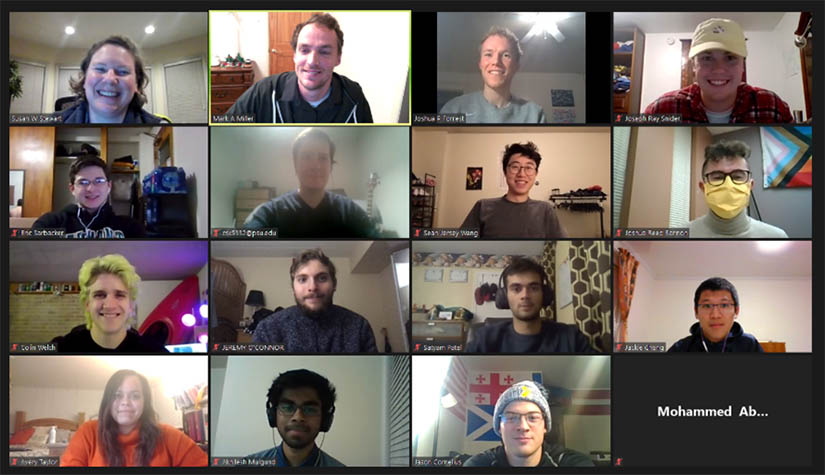Students Build Skills for the Clean Energy Economy in 2021 Collegiate Wind Competition
Following a year’s worth of work and two weeks of virtual presentations showcasing wind energy innovations from 13 competing teams, the Pennsylvania State University claimed first place overall in the U.S. Department of Energy’s (DOE’s) 2021 Collegiate Wind Competition (CWC).
Johns Hopkins University won second place, and California Polytechnic State University won third. Students presented to a remote panel of judges June 2–10, and the competition wrapped up with a series of virtual events on June 11.
The CWC aims to prepare students from multiple disciplines to enter the wind energy workforce by providing real-world technology experience. This year’s contest met that goal, with 173 students from a range of disciplines including engineering, economics, and architecture.
The National Renewable Energy Laboratory (NREL) facilitates the Collegiate Wind Competition, a DOE-funded workforce development program. Since 2014, the CWC has helped college students merge academic coursework with hands-on learning, connect with industry leaders, and prepare for jobs in the wind energy workforce.
The 2021 CWC teams competed in three contests:
- The Turbine Prototype Contest. Teams designed a model wind turbine.
- The Project Development Contest. Teams developed a site plan and cost-of-energy analysis for a 100-megawatt wind farm.
- The Connection Creation Contest. In this contest, new for 2021, teams conducted outreach with the wind industry, their local communities, and local media outlets.
Each year, the competition identifies a new challenge that addresses wind industry needs and helps students broaden their skills. The 2021 challenge was to research, design, and build a turbine for deployment in uncertain times, with a significant degree of unknown risks and delays. NREL competition organizers developed the 2021 challenge with the variabilities of both the coronavirus pandemic and the real world in mind.
“The teams embodied this challenge as they prepared for the 2021 competition and during the event itself,” said Elise DeGeorge, competition manager at NREL. “They anticipated alternatives to shared laboratory space and in-person meetings, planned for supply chain disruptions, and used digital tools to present their work. By doing so, they learned to plan ahead, practice active risk management, and adapt quickly—essential skills for the wind industry and beyond.”
Virtual Events and New Features Enhance 2021 Competition
In addition to the team presentations, the 2021 competition featured several other online events designed to complement the competition experience. These events included tours of NREL’s Flatirons Campus, an industry networking event, and a student-led poster session.

The Pennsylvania State University earned the highest combined score over three contests in the U.S. Department of Energy Collegiate Wind Competition. The team also won the Project Development Contest. Photo courtesy of the Penn State Wind Energy Club
Also new for the 2021 competition was the addition of two “learn-along” teams: the University of Colorado–Boulder and the University of Wyoming. These teams were not eligible for awards but submitted many of the same deliverables and received feedback on their work from competition judges. This format allowed students from these schools to experience the competition and establish a deeper understanding of the wind industry.
Watch highlights from the 2021 Collegiate Wind Competition.
The 2022 Collegiate Wind Competition is scheduled for May 16–19, 2022, at the American Clean Power Association’s CLEANPOWER 2022 Conference & Exhibition in San Antonio, Texas.
DOE plans to issue a request for proposals for the 2023 Collegiate Wind Competition in fall 2021.
Last Updated May 28, 2025
